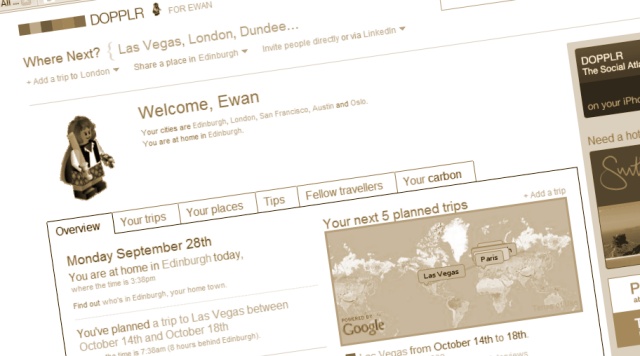First up, the good side, as pointed out to me by Janne Jalkannen. He's been using the music service Last.FM for many a year now – it tracks what songs you listen to and then recommends other songs you might like and provides a personal “radio like” stream of music. He's recently started using Spotify, which allows you to simply listen to any track in their database for free, in exchange you'll listen to an advert at a decent interval – even more radio like.
Over the last few days, Jalkannen has spotted that his Last.FM recommended music stream is proving to be much more accurate in gauging his likes:
“...on Spotify, every single song I play goes to the Last.fm database. And since I use Spotify only when I want to listen to a certain band or song, Last.fm has been collecting a fairly accurate representation of my music taste. So the more I use Spotify; the more accurate Last.fm becomes. This is a wonderful business model - the more you use a competing service, the better your own service becomes! “
And now the flipside. What happens when you don't have synergy? Well you end up with a situation like Palm has with their music sync on the Palm Pre. In case you're not up to speed, rather than build their own sync software, or go down the Windows Media Protocol or Mass Storage routes, Palm decided to have their device sync with Apple's iTunes. Without Apple's permission. A game of cat and mouse as Apple lock them out, Palm update and get back in, and repeat. A lot.
Of course every case has its own peculiarities and company ethos behind it, but the point is simple. Most software and services are improved by sharing and being open, as opposed to being territorial. Yes, there are short term benefits to the latter, but history shows, time and again, that the sum is worth more than the parts.

But the question in the smartphone world, especially as we look at the European Start-Up Hoover that Ovi is turning into, is whether all those parts should be separate and loosely joined through shared API's and consistent data, or whether we're happy having all those services under one single roof – be it a Finnish roof with Nokia, a Mountain View roof over Google, or Amazon, Yahoo, Apple, etc.
Right now I'm of the opinion that I'd much prefer the former, although I suspect the latter is viewed as more desirable by the likes of Nokia.
There's a certain amount of hope that comes from having all the elements on display and working together – long before the big companies come along you can see small services happy to offer something to other services because ultimately it benefits the user. But when the cheque book comes calling, these services walk into the labyrinth of the multiplexes... and some never come out.
Jaiku is a perfect example – a service that worked in less than 160 characters per message (sounds familiar) that pulled in content from a number of sources to your page, and allowed conversations to flow. For a brief moment Jaiku was ahead of Twitter in the mind stakes in Silicon Valley and the world. Google bought it, and then... nothing. It just screamed to a halt. And while Twitter is still the obvious call for short status messages, the wide ranging facilities of Jaiku have never been repeated with the same success.
But services being bought can develop. Twango was bought by Nokia in July 2007, was rebranded as Share on Ovi and was set to become the destination site for uploaded media to Ovi. Nokia's plans were tweaked as they started to embrace other media sharing sites, so Twango became little more than a sideline. But at least it was allowed to mature.
What makes these small companies special when they are out on their own is the almost laser like focus they have on their users and what they do best. They can be dynamic and react in just a few minutes – few people need consulting, committees do not need to be formed, and the holistic knock-on to another department in a mega-corp is not a consideration.
The key for a good purchase of any small company is to somehow harness what they do without destroying their ability to do it. Yes the money can help, but ultimately they were bought because of the promise of what they can do. Hopefully the openness and nimbleness of companies like Dopplr can thrive in an environment like Ovi... otherwise what is the point in buying them - just to strip their assets?
That's why, in a perfect world all these services would be standing on their own, talking nicely to each other, and sharing data. The real world, of course, is not like that, but the lessons these small companies learn needs to bubble throughout Nokia as fast as possible so they can have their software and services offering gathering fans and users as fast as the companies that get bought.
-- Ewan Spence, Oct 2009.
